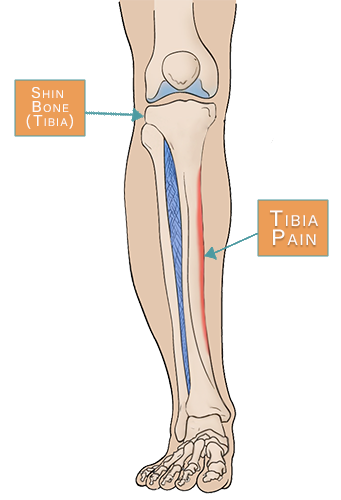What are Shin Splints?

Your shin bone (aka tibia) is the large bone located in the front of your leg. When someone complains of shin splints, that refers to pain along the shin bone. These painful aches are most common in dancers, runners, and also military recruits.
Shin splints are medically referred to as medial tibial stress syndrome. Shin splints most often occur in athletes who recently upped their workout intensity or training too quickly. Therefore, it overworks the muscles, tension, and bone tissue.
Treatment for shin splints includes over the counter medications and the RICE method. Also, wearing the appropriate footwear and gradually changing your exercise routine can help too.
Symptoms of Shin Splints
Medial tibial stress syndrome symptoms will arise on the side of your shin bone, such as:
- Tenderness
- Soreness
- A dull ache in the front part of the lower leg
- Pain that develops during exercise
- Tenderness or soreness along the inner part of the lower leg
- Pain on either side of the shin bone
- Swelling in the lower leg (usually mild, if present)
- Pain along the inner part of the lower leg
- Numbness and weakness in the feet
- Muscle pain
If rest, ice and over the counter medications are not working, consult a physician for further assistance.
Causes of Medial Tibial Stress Syndrome
Medial tibial stress syndrome pain is associated with too much force on the bone and tissue that attaches the shin bone to the muscles. And this excessive force causes pain and inflammation from pressure against the bone.
It’s also possible for shin splints to occur from stress reactions to bone fractures. And if given the proper rest time, these tiny cracks can repair themselves. However, if the time to rest is no given, they can result in a complete fracture.
Shin Splint Treatment
When medial tibial stress syndrome occurs, you mustn’t perform certain physical activities. Instead, allow your body to rest. Sometimes, it can take up to a few days for the pain to dissipate. However, this is only with limited activity and rest. It’s usually recommended that if you experience a shin splint, to give it two weeks to recover. It’s a good idea to check with your doctor before you start up any new or previous activities again. You don’t want this to result in a complete fracture!
Surgery
Although surgery is rare, it is possible. Surgical intervention usually is recommended if shin splints last for more than several months and are causing severe pain.
Fasciotomy: This procedure is the most common for shin splint. The surgeon will perform tiny cuts in the fascia tissue surrounding your calf muscles. And this will potentially relieve pain.
If you are experiencing shin splints without relief, call us immediately at 888-409-8006. Locations throughout South Florida include Coral Springs, Deerfield Beach, Boca Raton & Plantation.
Our offices offer top surgeons and pain management doctors!
